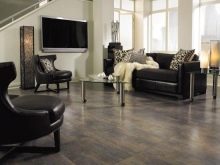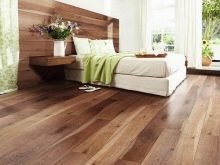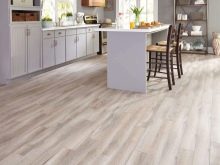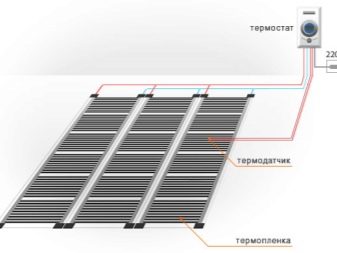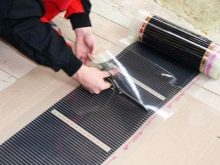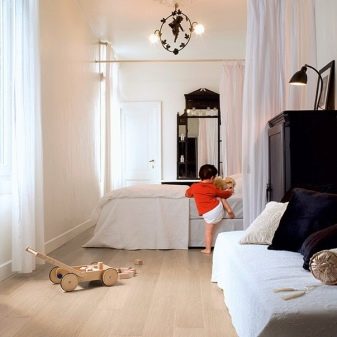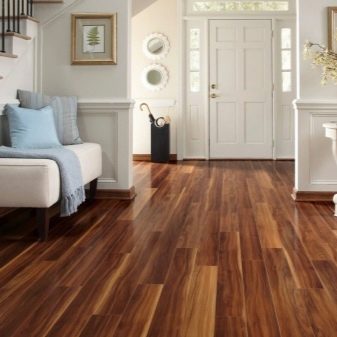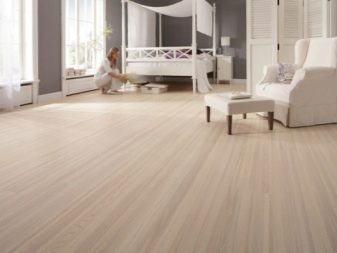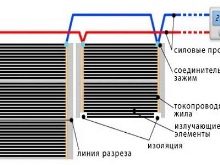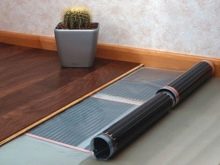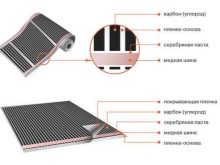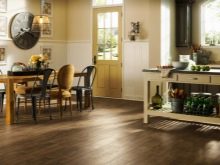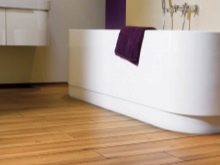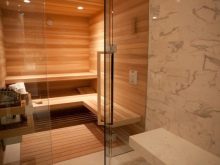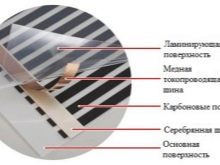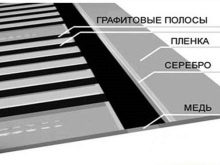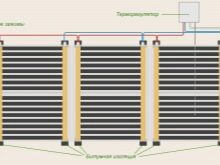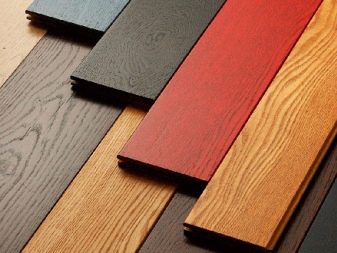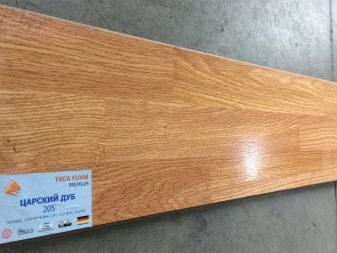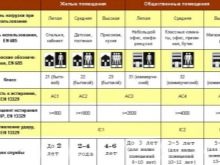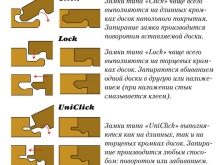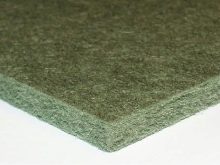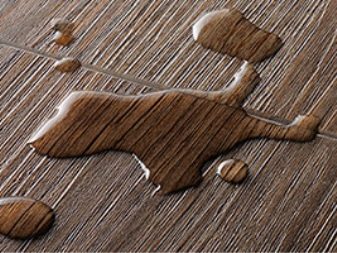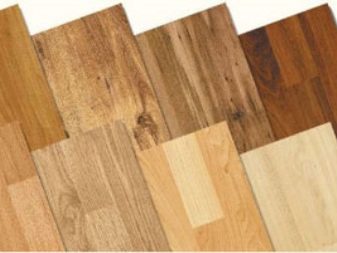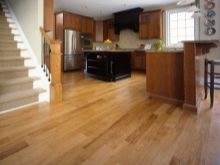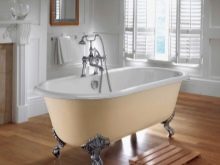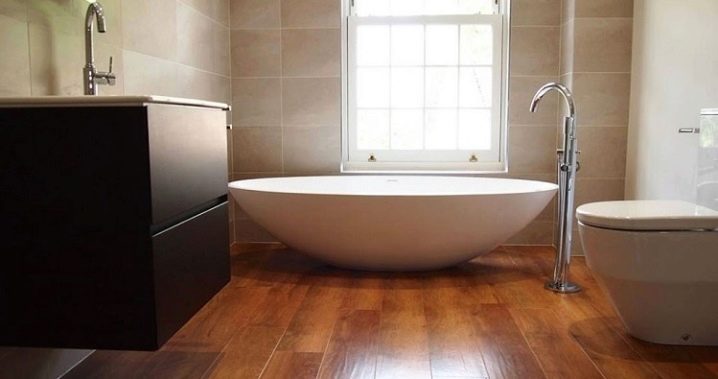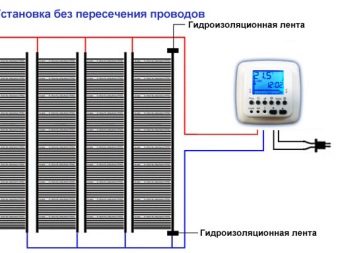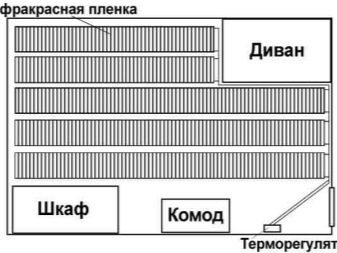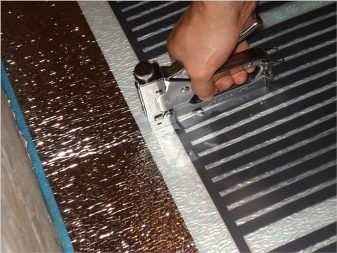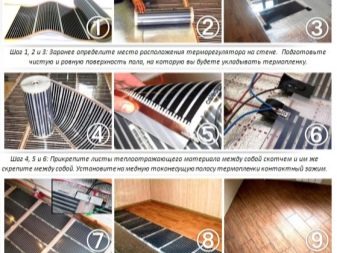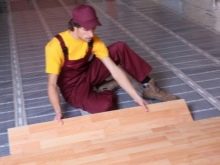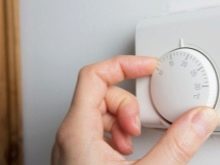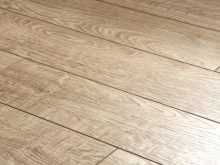Infrared warm floor under the laminate
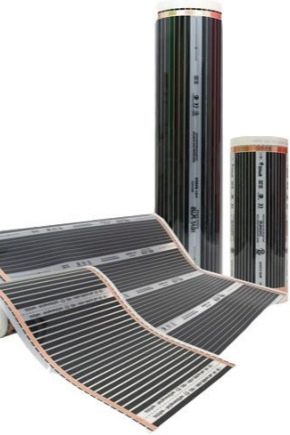
One of the modern methods of floor insulation is infrared heating. This unique technology has its own distinctive characteristics and advantages over other types of warm floors.
Infrared floors are great for installation under the laminate. Before purchasing them, you should understand all the features of floor insulation in this way and choose the best option for your room.
Advantages and disadvantages
Laminate is a multi-layer floor covering containing wood base and resin-impregnated paper. Therefore, such a coating should not be strongly heated. Another nuance - the laminate does not conduct heat well enough.Warm floors are recommended to choose in view of these details.
Infrared floors are electric heated floors. There are two technologies for infrared heating of the floor - using a film and using a cable.
Both species have their own characteristics. If we evaluate as a whole, then infrared radiation uniformly heats the floor surface. During its operation, the air in the room does not become dry. The heating process is activated immediately after switching on the system. Thanks to a special thermostat, you can maintain a comfortable temperature in your home.
Cable warm floor is more suitable for laying under the tile. The advantage of this floor is that it does not heat the furniture and is suitable for wet rooms. However, for its installation is required to make a coupler on the floors. In case of breakdowns for floor repair, you will need to dismantle the floor. Cable system has a high price and high power consumption.
Infrared film has its advantages. It can be laid under such light flooring as laminate, carpet, linoleum. Its installation is convenient and does not take much time. It works without noise and vibrations.
The infrared film is a sheet covered with a plastic film on both sides. Heaters are placed inside it; in composition, they can be carbonic or metal. Such a film emits long-wave infrared rays. It is possible to use both the main, and additional system of heating.
The advantages and disadvantages of using film technology should be considered.
Pros:
- Installation does not require laying the cement screed on the floor;
- Thin film material does not increase the thickness of the floor;
- With proper installation and rational use saves energy, the efficiency is more than 75%;
- It has an affordable price;
- It is possible to heat certain places or rooms;
- Infrared rays heat the floor, then heat spreads to the furniture. They will not be drafts and dust;
- Not afraid of low temperatures. You can install in the country and off at the time;
- It begins to radiate heat immediately after connecting to the network;
- It can be installed in various rooms and rooms - it can be a private house, a summer house, an apartment, an office, a garage and others;
- Fast installation from one to several days.You can put and connect the entire system yourself;
- Provides uniform heating of the room. Heat does not go to the ceiling, which helps to save energy. Floors are always warm;
- Reliability. Quality samples are guaranteed for ten years, rarely break. But the thermostat and temperature sensor during this time will have to change;
- When moving, you can quickly disassemble and re-install in a new place.
Minuses:
- Laying requires smooth surfaces;
- Heats pieces of furniture close to the floor;
- Do not choose as the main source of heat, as there will be large energy costs;
- Will not function when the power is disconnected.
Detailed study of the characteristics of the film floor, accurate calculation of the area and proper planning of the heating zone, proper installation and use are a guarantee of the durability of infrared floors.
Specifications
The structure of the infrared floor includes components:
- The film contains elements that conduct electric current - these are strips of copper and silver. They act as current conductors to the heating elements;
- Insulating material performs the function of waterproofing and insulation,reflecting heat to the top. There are heaters made of cork substrate, isolon, penofola, liquid composites, polystyrene foam;
- The thermostat controls all the activity of the infrared floor, optimizes depending on the mode;
- Thermal sensor serves as a safety device against overheating and transmits temperature data to the thermostat;
- Fasteners: bituminous insulators, adhesive tape, PVC film and others.
Technical capabilities:
- film thickness - in the range of 0, 2-0, 4 mm, width from 50 to 100 cm;
- infrared heater power - 220 W / m2;
- wavelength from 5 to 20 micrometers;
- energy consumption, on average, 35 watts per square meter;
- power supply - 220-230V with a frequency of 50 Hz;
- warming up from 5 minutes;
- ions with a negative charge are emitted;
- minimum electromagnetic radiation.
Principle of operation
As noted above, the floor heating system includes a thermostat, temperature sensor for the floor, heaters. The thermostat is mounted on the wall, usually next to the sockets. Electricity is supplied to it. After inclusion in the network begins the process of heating. Electric current is fed into the device and passes through the heating elements.In heating elements, it turns into heat energy. From the emitter goes to double-sided film. The film begins to spread heat waves. The floor surface is heated, then all the objects in the room are heated. The thermostat helps to set the required temperature thanks to the data from the temperature sensor.
The mode of operation you define yourself. You can turn on the floor heating only if necessary or not turn it off all day and night.
Kinds
It is necessary to understand and compare the films for warm floors. So, by the level of heating, they are subdivided:
- Low temperature Samples heat up to 25-30 ° C, ideal for laying under laminate and similar coatings. Suitable as an element of additional or local heating;
- High temperature models - heat up to 50-55C, they can be used as the main source of heating and laid under the expanded clay, tile. Suitable for saunas.
On the heating element are distinguished:
- Carbon the heater is a carbon paste with additives. At the heart of the film of Dacron, it has good elasticity and strength.Such films can be installed on both vertical and horizontal surfaces. There are two types of carbon films: striped and with a continuous coating. In the first version, the paste is applied in the form of strips, their width is different, the strips are blocks, their connection is parallel. In case of continuous spraying, the paste is applied on the entire surface of the film. Also has a block structure.
- Metal aluminum and copper heater. At the base - double plenochka of polyurethane. This type of film is not recommended to lay under the tile and heat above 26-27C. There is no possibility to connect the ground wire.
In terms of power consumption, when choosing a film, it is necessary to take into account the application area and material.
Which laminate is suitable?
Laminate flooring has good thermal insulation, its thickness can also be different. Therefore, not all types of laminate are compatible with infrared heating systems.
When choosing a laminate it is worth considering the following factors:
- Marking Manufacturers mark with a special icon material suitable for infrared heating. The maximum temperature of heating is prescribed, the recommended floor heating system.
- Laminate class determines its durability and strength. For warm film floors laminate 32-33 class is perfect.
- Insulation characteristics determine the coefficient of thermal resistance of the laminate. High coefficient means high resistance. For infrared floor suitable samples with low rates for this parameter, with a small thickness and density. If the laminate is dense, the underfloor heating system will spend more energy on its warming up, and the heat will pass more slowly;
- Type of compound lamellae. The way of connection happens glue and castle. It is preferable to the castle, which, in turn, may have precast and snap-type locks;
- Heating temperature material and quantity of formaldehyde. The maximum threshold is 27 C.
The substrate compensates for the roughness of the floor. She, too, should not be with a high coefficient of insulation. The optimum thickness is from one to three millimeters.
Before buying it is recommended to consider manufacturers, product prices and customer reviews.
There are different opinions about whether the vinyl laminate is suitable for an infrared floor.Roughly speaking, this coating is a mixture of laminate and linoleum, made from polyvinyl chloride. It is in itself very warm and without a heating system. It can be used for different rooms. Vinyl laminate is resistant to moisture, you can lay it in the sauna, bath, bath.
In general, the vinyl coating does not need additional heating. But if you decide to insulate such floors, then the infrared film system will come in handy.
Choose models with a locking connection, and not on a glue base. The maximum heating temperature of the vinyl coating should not be higher than 40 C. In the room should not be laid carpets and put the furniture, adjacent to the floor.
How to choose?
If the choice fell on infrared floors as the source of the main heating, it is necessary to cover them with 70-75% of the area of the room or room. Prefer as an additional source of heat - then 40%. It all depends on the climate in your area of residence. In regions with a predominance of cold temperatures, infrared floors will not be able to provide full heating as the main source. Therefore, determine the area to be covered in advance, before purchasing films.
For the house more often choose a cloth in width of 50-60 cm.For other rooms, whether office or sauna, use wider samples.
The room of the oblong size is better equipped with two lanes with separate connection. The permissible length for each strip must be indicated on the packaging of the material.
It is very important to arrange a warm floor. For the kitchen area, toilet, bathroom, you should choose a laminate flooring treated with moisture-resistant substances.
Pay attention to the quality certificates, warranty period, how safe the material is, what it is made of, where it is recommended to use.
If you want to save time and effort, then there is an alternative option - the purchase of a finished combined product - laminate with films. This product has three layers. Heating parts are placed between the substrate and the laminate. The whole structure fits simultaneously. The system is completely ready for installation, it is only necessary to connect the wires between the heaters and snap the locks.
Where to put?
As mentioned above, the film warm floor can be installed in all rooms: kitchen, bedroom, bathroom, toilet, bath, sauna, office, garage and others.If you plan to move, then dismantle the floors is not difficult, they can be used again. But it is worth remembering that it is not placed under the massive furniture without legs, under the cabinets, walls and others.
In addition, the film can be installed both on the floor and on the wall, on inclined surfaces. In agriculture, with it, sheds, greenhouses, and incubators are insulated.
Infrared film can be put not only indoors, but also on the loggia, and on the balcony. Construction regulations do not allow the withdrawal of central heating in these areas. Warm floor for a balcony can not be mounted. You can create comfort and warmth on the balcony, just spread out the insulation and covered with a rug.
When the warm season comes - just turn off the system.
Installation rules
The technology of laying films considered by us has its own characteristics. If you decide to independently install the system of warm floors, first read the instructions for installation.
Some important rules you should not forget about:
- The total length of the bands is determined using a pre-made scheme, Estimate the area and make a plan for the placement of heating elements, contacts and sensors.Then measure the length of the strips of film. It is worth remembering about the furniture, under which you will not put the infrared material. The gap between the walls and the film should be from 0.2 m;
- You can not install a system of warm floors around stoves and fireplaces. Lay the film better in a dry and heated room. Try not to bend the material;
- Before laying the warm floor, the surface must be cleaned of debris, all dirt and check whether it is even. If the deviation is more than three millimeters, the surface should be ground. Then the insulating layer is fastened with a metal part to the outside. At the junction of the insulating material are attached with scotch tape;
- Film strips cut in accordance with the plan. You can cut along the marked lines, if they are not, then between the heating elements. The size of the strips should not be more than eight meters, the distance between them - from one and a half to one meter. The number of contacts depends on the size of the bands;
- Elements are laid on an insulating substrate, which will prevent heat loss. The heat sensor is mounted below;
- Contacts. One part of the clips is connected inside the material, the other is brought out,where is the current, then fix the tools. The incisions of the contact tires are insulated with bitumen tape;
- To install the thermostat, you can connect it separately, or using an outlet. The optimal distance from the floor is about 15 centimeters. Thermal sensor is recommended to place under the film, starting from the second band. Turning on the thermostat, you need to check their heating. There should not be sparks, strong overheating. After that, you can proceed to laying laminate;
- Before laying the laminate, the infrared film is protected from excessive pressure, stress, and damage by a PVC film coating. It is evenly spread over the entire surface;
- It is recommended to heat the floor, increasing the power by several degrees a day, otherwise you can ruin the laminate flooring.
With proper installation, taking into account all the characteristics of the room, heated floors will be able to give warmth and serve the owners for a long time.
In the video you will find a video tutorial on the installation of infrared floor heating under the laminate.
